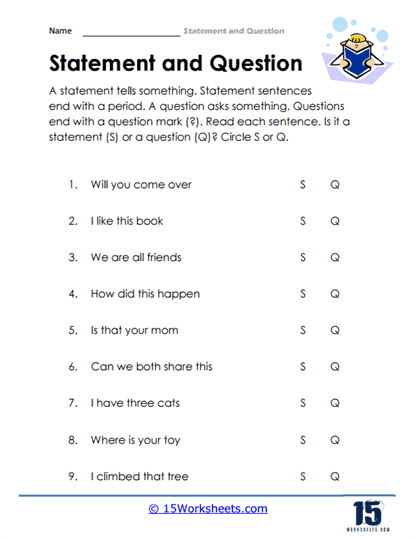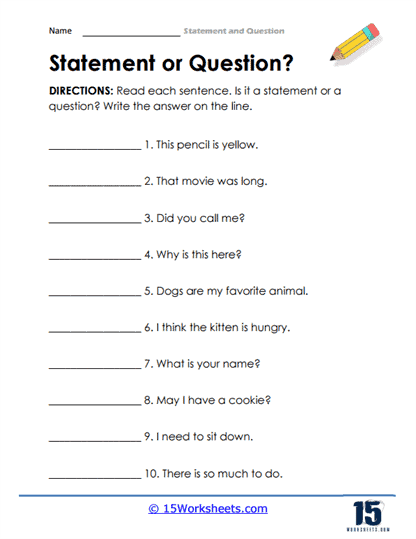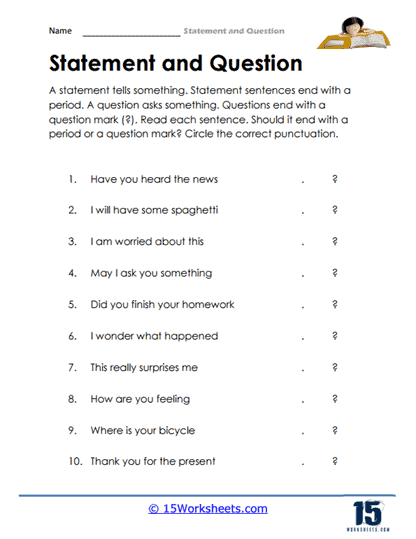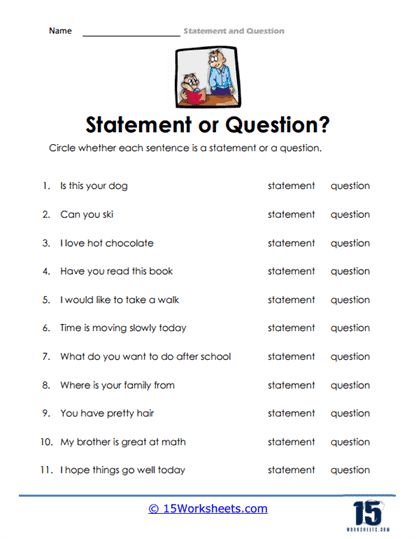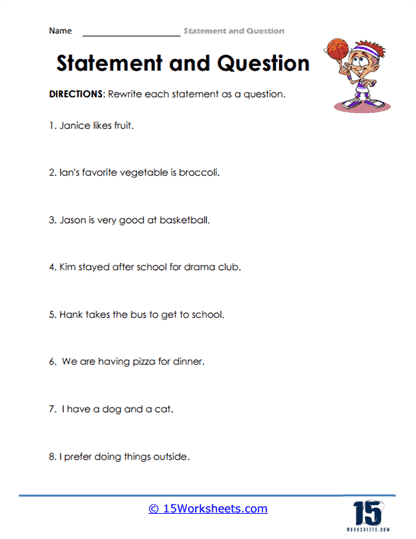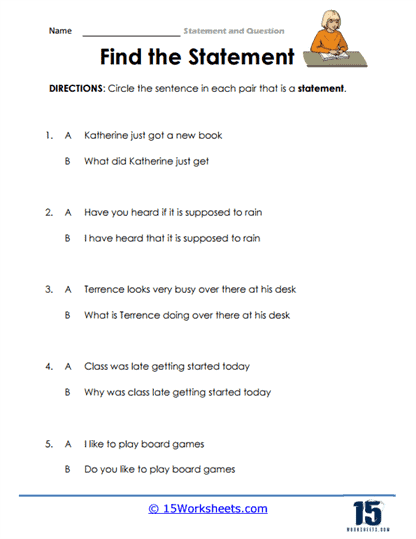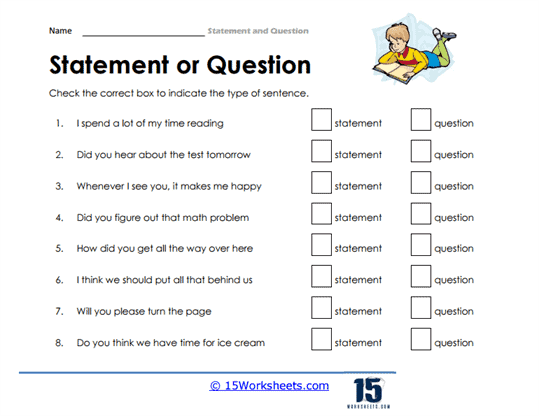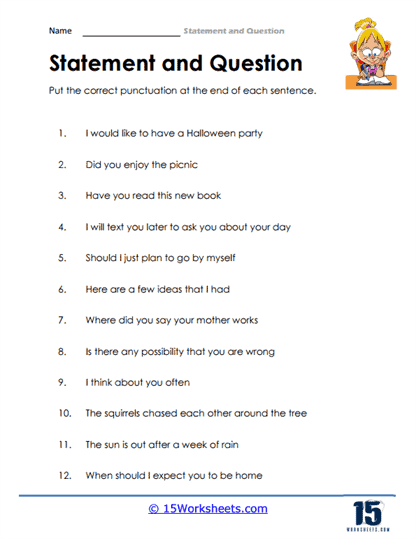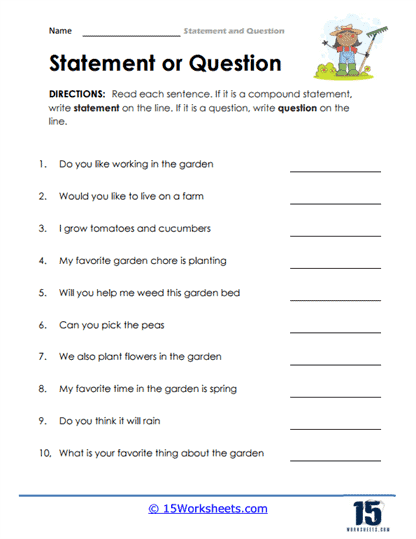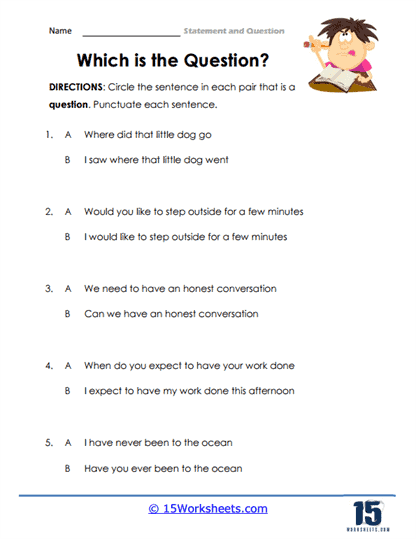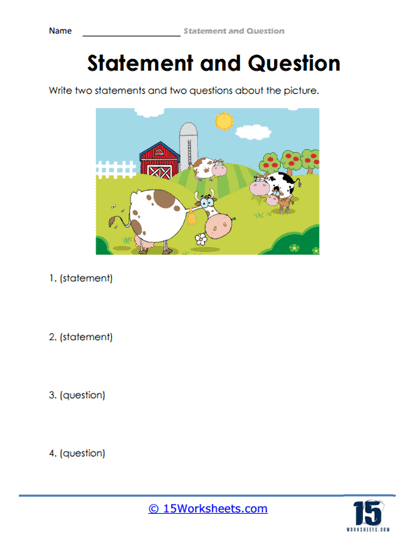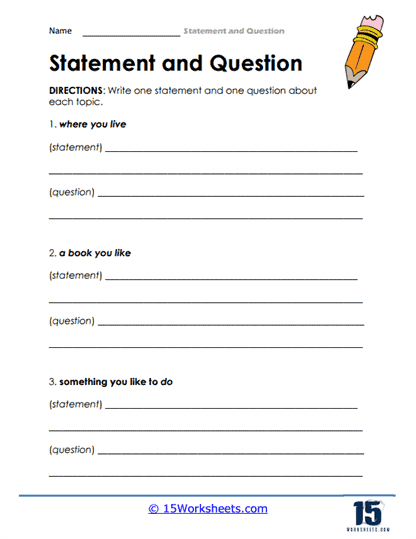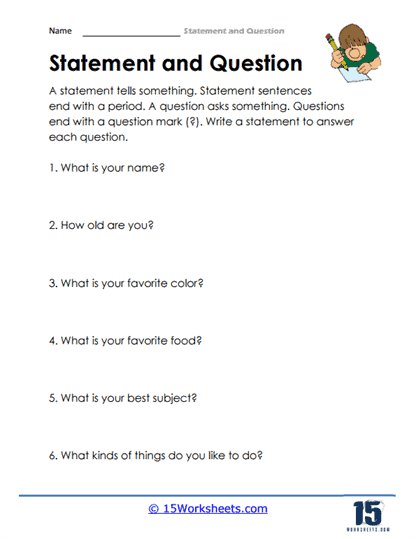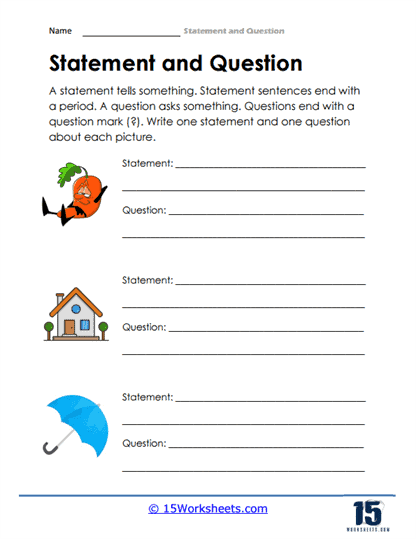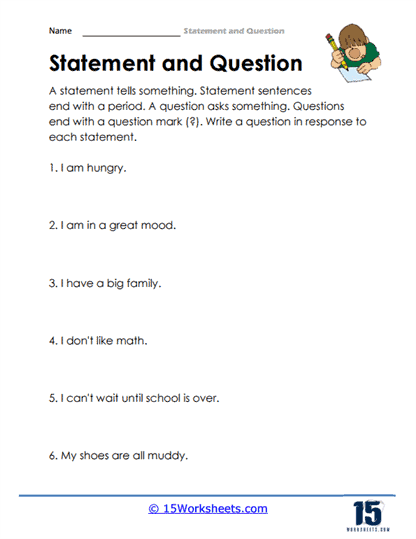Statements and Questions Worksheets
All About These 15 Worksheets
This series of 15 worksheets is an invaluable resource designed to help students develop strong communication skills by mastering the art of constructing statements and questions. These worksheets provide students with a solid foundation in expressing themselves effectively through written expression, fostering clarity, coherence, and confidence in their communication.
The exercises focus on equipping students with the necessary tools to create well-formed statements and engaging questions. Students learn to differentiate between statements and questions, understand their functions and structures, and develop proficiency in using them appropriately. Through these worksheets, students will:
- Distinguish statements from questions, demonstrating a mastery of knowledge on their form and function;
- Rewrite statements as questions and vice versa;
- Apply the proper punctuation to statements and questions;
- Write their own statements and questions using pictures as visual clues;
- Write statements as responses to questions, and vice versa;
- And understand the distinctive features and purposes of each sentence type, honing their ability to select the appropriate sentence type for different communication contexts.
This series is suitable for students across different grade levels and can be integrated into language arts classes, communication skills workshops, or individual writing practice. By using these worksheets, teachers provide their students with the tools to express themselves effectively, engage in meaningful conversations, and develop strong communication skills.
Through the varied exercises, students develop essential skills in sentence construction, communication strategies, critical thinking, and self-expression. In summary, they empower students to convey their thoughts and ideas with clarity, ask meaningful questions, and actively participate in both written and spoken communication. This Statements and Questions worksheets series lays the groundwork for effective communication skills that will benefit students in academic, professional, and personal contexts.
Statements vs. Questions
Statements and questions are two distinct types of sentences in language that serve different purposes in communication. Here is a comparison and contrast of statements and questions:
Statements
Purpose
Statements convey information, opinions, or ideas to the reader or listener. They provide details, express thoughts, or make declarations about a particular subject.
Structure
Statements usually have a subject followed by a verb and, in many cases, an object. The word order is typically subject-verb-object (SVO) in English.
Punctuation
In written language, statements end with a period (.) in English and other languages that use the Latin alphabet.
Intonation
In spoken language, statements generally have a neutral or falling intonation pattern, indicating that the speaker is providing information rather than seeking it.
Examples:
- The sky is blue.
- She loves to read books.
- We went to the store yesterday.
Questions
Purpose
Questions are used to request information, clarify details, or seek understanding from the reader or listener. They invite a response and stimulate dialogue.
Structure
Questions can have varied structures, including interrogative pronouns (who, what, where, when, why, how), auxiliary verbs (do, be, have), or inversion of subject and verb. Word order can differ from statements, often with the verb or auxiliary verb coming before the subject.
Punctuation
In written language, questions end with a question mark (?) in English and other languages that use the Latin alphabet.
Intonation
In spoken language, questions often have a rising intonation pattern, signaling to the listener that a response is expected.
Examples:
- What time is it?
- Do you like ice cream?
- Where did you go on vacation?
Overall, statements are used to convey information or express thoughts, while questions are used to request information or seek understanding. They differ in their structure, punctuation, and intonation, reflecting their distinct purposes in communication. Understanding the differences between statements and questions is essential for clear and effective communication in both written and spoken language.

